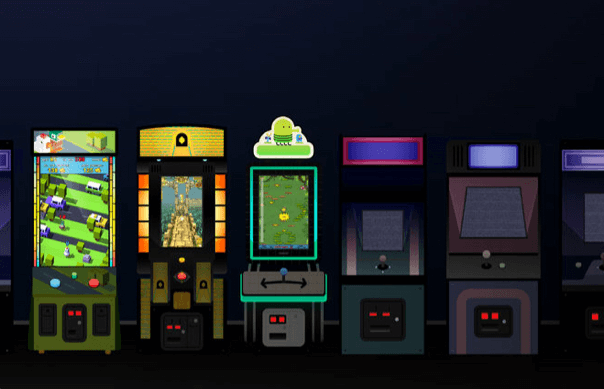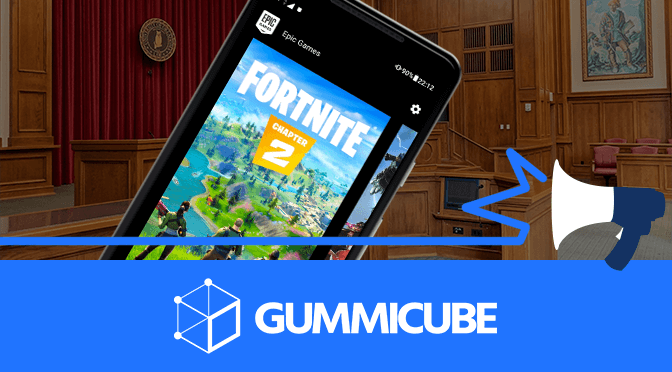Cheat Codes to Improve Visibility for Mobile Games
March 21st, 2018


by David Bell
CEO at Gummicube, Inc.
The App Store and Google Play Store are teeming with millions of apps, a great deal of which are mobile games. The gaming industry has come a long way since old-school arcade games and even home or portable consoles. In fact, games have been accessible on-the-go since the original 1976 version of Snake launched on mobile devices in 1998.  The mobile gaming industry has boomed, generating $59.2 billion dollars in 2017. Additionally, Google reported $4.5 billion dollars in revenue in Q3 of 2017 alone. This explains why competition has skyrocketed within the industry over the past few years. Game developers want to take advantage of this lucrative industry, but to do so, they need a way to beat their competition. In order to stay competitive in downloads, search results and players, developers need to utilize App Store Optimization (ASO), which will help put their game ahead of the competition.
The mobile gaming industry has boomed, generating $59.2 billion dollars in 2017. Additionally, Google reported $4.5 billion dollars in revenue in Q3 of 2017 alone. This explains why competition has skyrocketed within the industry over the past few years. Game developers want to take advantage of this lucrative industry, but to do so, they need a way to beat their competition. In order to stay competitive in downloads, search results and players, developers need to utilize App Store Optimization (ASO), which will help put their game ahead of the competition.
How Do Developers Improve Visibility for Mobile Games?
A strong ASO strategy starts the same, no matter what category your app falls under. However, it’s imperative that game developers evaluate their competition and the current market. Starting here will help them get a better understanding of how to optimize their games to reach their potential audience. For a mobile game to become more discoverable and relevant within the app stores and its respective category, developers need to create a well-thought ASO strategy that pays close attention to the app name, keywords, description and creatives.
1. Attract Users with a Unique Name
The app name is key - it highlights the game or brand’s name along with its most important feature. Developers should start by optimizing their app name to get a better understanding of what keywords to target and integrate throughout the other pieces of their metadata.
2. Become More Relevant with Keywords
Users tend to search in 2-3-word phrases regarding the type of game they want to play. With this in mind, developers know where to start when choosing their keyword selection. Looking at casual games, for instance, the most obvious keyword to target is, of course, “casual.” However, since many games can fall under this umbrella, developers should also choose more niche keywords that are relevant to their app’s core features and functionality. Depending on the type of game, developers can include terms such as:
Classic arcade games
Puzzle games for free
Match 3 RPG
Action adventure games
If users search for the term “match 3 RPG,” they’ll notice that the third and fourth games feature that keyword in their title. This is a good start, but because they aren’t ranked top for that keyword, they should bring more focus to the keyword and integrate it within other areas of their app’s metadata to improve their visibility.

3. Explain the Game with the Description
The description is the largest area for developers to explain what their game is about. Developers can go into the storyline, core features, functionality and more, but they need to make sure that they get the most out of the time spent highlighting these features and gameplay by integrating high-volume keywords. Since there is so much competition, it’s crucial to incorporate relevant keywords to increase a game’s overall ranking and visibility. Developers need to be wary of how they place keywords, however, as they don’t want to stuff them where they don’t belong; that raises a red flag on both the Apple App Store and Google Play. If keywords are used more naturally, users will be more inclined to download the game.
4. Entice Users with Creatives
When it comes to mobile games, users want to see what the game will look like. That means that the interface, artwork, graphics and more should be highlighted through the icon, screenshots and preview video(s). It’s important to have stunning creatives that wow and entice users, or else they’ll be less likely to convert. Developers can start this process by breaking down creatives and asking questions like:
Does the icon feature a branded image?
Is it recognizable and memorable?
Does it clearly highlight the app’s core feature?

Are screenshots featuring colors that are consistent and on-brand with the game’s identity?
Is character art or in-game content displayed?
Does it feature a call to action that incorporates high-volume keywords?


Asking these questions creates a helpful starting point for game developers. From there, they can create stunning creatives that capture users’ attention and clearly highlights their game’s core features.
Thoughts Moving Forward
Mobile game developers need to create an ASO strategy to make their game more visible in the app stores and stand out against the competition. Having a solid strategy will not only help mobile game developers compete against big-name game companies but also help them see larger conversion rates and increased revenue.
Similar Articles

Posted on August 15th, 2020
Every time a user makes an in-app purchase or buys an app from the App Store or Play Store, Apple or Google takes a portion of the revenue. This App Store Tax has caused complaints for some developers, but with Apple and Google in the middle of antitrust hearings, tensions are continuing to grow.

Posted on August 8th, 2020
Apple has a strict set of App Store Guidelines that developers must follow in order to avoid being removed. Recently, it was announced that the guidelines will prevent developers from selling cloud gaming apps on the App Store. This could have an impact on app marketing, development and App Store Optimization.

Posted on July 7th, 2020
Apple Arcade, the App Store’s subscription game service, provides users with unlimited access to over 100 games for the price of $4.99 a month. Yet Apple can afford to be choosy, as it's cancelling several Arcade game contracts in the company’s effort to maintain subscribers.




 The mobile gaming industry has boomed, generating
The mobile gaming industry has boomed, generating 




